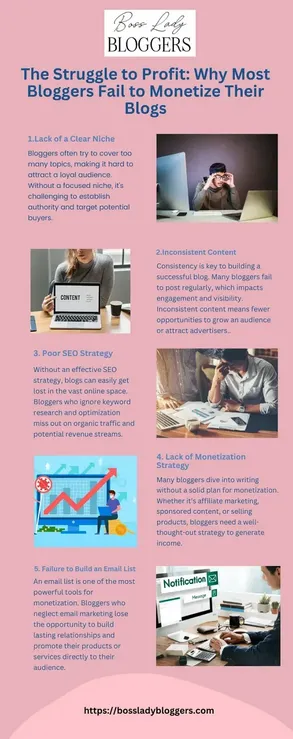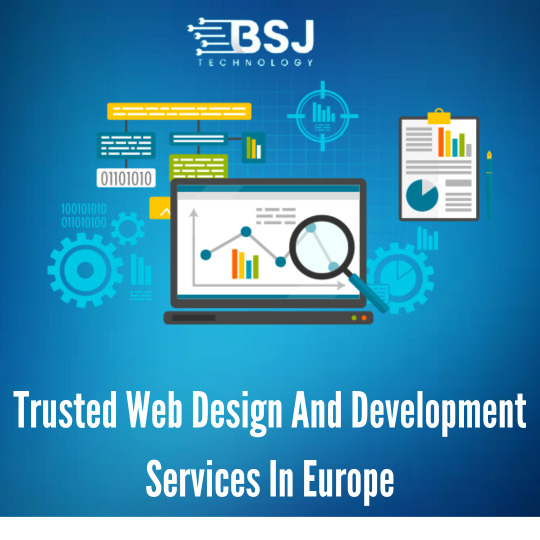#Smart Web Design
Explore tagged Tumblr posts
Text
The Struggle to Profit - Why Most Bloggers Fail to Monetize their Blogs
Whether you’re a novice blogger or a seasoned veteran, this community welcomes you. Our goal is to support one another as we work towards creating not just a side project, but a thriving blog that evolves into a prosperous business. Come be a part of our encouraging community where progress and teamwork flourish . For more details Click here .

0 notes
Text

guys we gotta stop this, literally all i do is draw pixel art for my games and code, and i go on the godot discord to see some GENIUS SAY WORDS THAT PROBABLY HAVEN'T EVEN BEEN INVENTED YET.
QUATERNION?? NOWAY THATS A REAL WORD.
#NO HATE TO NICK I JUST SAW THIS AND THOUGHT IT WAS FUNNY HES PROBABLY TO SMART TO SEE THIS ANYWAY#pixel game#pixel illustration#programming#game design#coding#indie game dev#game dev update#game development#game developers#game dev#game dev blog#indie dev#game dev stuff#indie game#indiegamedev#devlog#indie developer#web development#developer#codeblr#code#godot
29 notes
·
View notes
Text

The Socialite Family
#The Socialite Family#smart#cool#families#famille#inspiration#shop#Constance Gennari#histoires de famille#creations#home#design#objects#typography#type#typeface#font#Söhne#Tiempos Headline#2024#Week 17#website#web design#inspire#happywebdesign
8 notes
·
View notes
Text

Join us to become advance future Online Business Owner. Stay updated with trends, best practices, and insights from our team.
#webcore#web template#web design#website#business#branding#seo services#digital marketing#web development#e commerce#coding#ecommerce#artificial intelligence#online#commercial#wearable tech#smart home devices#laptops and computers#gps and navigation#office electronics#computing#computer#technolog#workplace#solution#writers on tumblr
2 notes
·
View notes
Text
Aixus — Top Webflow Website Template for SaaS, AI & eCommerce platform
Your website is more than just a business card in today’s digital-first world. It’s also a place to show off your products, tell your brand story, and get people to buy from you. SaaS startups, AI platforms, and modern tech companies all need a website that looks good and works well. Aixus is a futuristic, professional Technology Webflow Website Template made just for tech brands and businesses that want to be on the cutting edge.

Aixus is made to help you grow your online presence and your business quickly, whether you’re launching a new AI product, growing a SaaS company, or making for your eCommerce platform.
🔗 Look at the : Aixus — Technology Webflow Website Template
What is Aixus?
Aixus is a modern and eye-catching Webflow Website Template clearly communicates your SaaS offering and, most importantly, drives conversions that convert your business forward. This SaaS template helps you automate your path to success, generate more leads and increase sales for your business. This template is primarily created as a Webflow SaaS template, it can be used for various other needs.
Why Tech Brands Choose Aixus
Here’s why Aixus is a top pick for SaaS startups and next-gen technology firms:
Trendy Premium Design: Aixus template has a clean and minimal, yet modern design style. It follows the latest design trends, so your website will have a modern and premium website design.
CMS Functionality: Aixus is built using Webflow CMS functionality. This template allows you to publish informative blog posts, news and testimonials with powerful CMS integration.
Pricing Information With Toggle: Clearly outline your pricing plan with toggle options. This ensures transparency and helps potential customers choose the most suitable package as per their needs.
Login & Signup Page: Visitors can easily access their account, create a new one and manage their profile and settings with our perfectly designed pages.
Impressive Blog Showcase: The blog page is designed with precision to make it easy for visitors to find and read the blog they are looking for.
Engaging video sections & responsive sliders: Highlight your expertise with high-quality video segments and showcase your SaaS promotions with responsive sliders.
FAQ Showcase: Our FAQ page fully highlights every detail and answers the most common questions and provides valuable information. It makes a strong impression and convert visitors into satisfied customers.
Terms and Conditions Showcase: This page displays every information with professionalism to the users. They cover important aspects like licensing, acceptance of terms, use of services, limitation of liability and more.
Dedicated Customer Support: When you choose Aixus, you get exceptional support from TNCFlow team. Our dedicated professionals can answer your questions and ensure your online presence.
Final Thoughts In tech, first impressions are very important. With Aixus, you can make a sleek, professional website that talks directly to your target audience, whether they are users, investors, or business clients.
Aixus is the Webflow Website Template for modern tech brands that helps you launch smarter, grow faster, and show off your product in a beautiful way.
🔗 Right now, go to https://tncflow.com/template/aixus/ to see it.
👉 Here are some additional templates:
Chatbot TNC
JobX TNC
MailFlow TNC
SalesAi TNC
#techinnovation#smart tech#technique#technology#tech#web design#business#webflow#digital marketing agency#small business#website#startup
0 notes
Text
Day 2 at iSarva: Help Me Help You (Before My Boss Finds Out 😅)”If You Need Website, I’ll help you out

Hi there, I’m Thea – a Marketing Intern at iSarva Infotech Pvt. Ltd., and it’s only my second day on the job (yes, you read that right – day two!). While I’m still soaking in all the tech wizardry around me, my boss already gave me my first mission:
👉 Find people who need websites, apps, or any digital solution. If I don’t… well, let’s just say I’ll be in trouble 😅
🧠 So What Does iSarva Infotech Even Do?
We’re an IT software company based in India that builds and supports everything digital — From simple, elegant websites to complex enterprise-level software. Here’s a taste of what we do:
✨ Web Development – Clean, fast, mobile-friendly websites that actually work. ⚙️ ERP Solutions – Customized systems to simplify your operations. 🚀 Digital Marketing – Because just existing online isn’t enough. 🛰️ Cloud Services – Modern, scalable, and reliable. 🧭 GPS Tracking Software – Track, manage, and optimize on the go. 🌍 Offshore Development – Hire dedicated developers, without boundaries.
👀 Who Can We Help?
Small business owners 🧑💼
Entrepreneurs with a big vision 💡
Corporates with outdated tech 🏢
Startups who want to move fast 🚀
Anyone who wants to go digital in 2025
📣 Now Here's My Pitch
If you or someone you know needs a website, app, digital marketing, ERP, or software that doesn’t suck... 👉 Please DM me +91 99028 63697 I’ll connect you with the team (and maybe avoid the wrath of my boss 😬).
Check out our work here: https://isarvait.com
Let’s build something cool together. Your idea + Our tech = 🔥
—
#marketingintern #isarvainfotech #websitedesign #digitalagency #startuptech #internshipdiaries #indianstartup #ITsolutions #supportsmallbusiness #letsconnect
#uiux#website#web development#website design#hrms software#wordpress#weirdcore#ecommerce#software#technology#digital transformation#smart tech#computer#cell phones#laptops#technoblade#techinnovation#technique#tech#phones
1 note
·
View note
Text

https://www.istudiotech.in/artificial-intelligence-development-company-in-chennai-india/
iStudio Technologies is a leading Artificial Intelligence (AI) Development Company in Chennai, offering cutting-edge solutions that empower industries like education, finance, and mobile apps. Their services include AI chatbots, voice assistants, automated grading, secure online assessments, and hyper-personalized learning systems to enhance productivity, decision-making, and user experience.
#AI Development#Artificial Intelligence Chennai#Machine Learning Solutions#AI Chatbot#EdTech AI#AI in Education#AI Software Company#Smart Learning Tools#Automation in Education#AI Developers Chennai#web designing company in chennai
0 notes
Text
UX/UI Best Practices for E-Commerce Platforms in 2025
Table of Contents Introduction to UX/UI for E-Commerce in 2025 Why UX/UI Matters in E-Commerce Success Key UX/UI Trends for E-Commerce in 2025 AI and Automation in UX/UI Design Essential UX/UI Best Practices for E-Commerce a. Mobile-First Design b. Simplified Navigation & Search c. Personalization & AI Recommendations d. High-Speed Performance & Load Time Optimization e. Secure &…
#A/B testing#accessibility design#AI chatbots#AI personalization#bounce rate reduction#conversion rate#digital experience#E-commerce UX#fast-loading websites#future of UX/UI#intuitive navigation#lazy loading#mobile-first design#online shopping#personalized shopping#progressive web apps#seamless checkout#SEO for e-commerce#smart recommendations#trust signals#UI best practices#user-friendly interface#UX design trends#voice search#website optimization
0 notes
Text
Building an Entrepreneurship Curriculum for a Traditional Liberal Arts School
youtube
Join us as we delve into our partnership with Cincinnati Classical Academy. Discover how we infused entrepreneurial thinking into the school's core subjects of humanities, sciences, and arts. We'll showcase the hands-on experiences we've crafted to equip students with the skills and knowledge they need to succeed as entrepreneurs. Be inspired by the possibilities of entrepreneurial education in action.
#Digital Marketing Curriculum#Graphic Design Curriculum#SEO Curriculum#Smart School Entrepreneurship Curriculum#Web Design Curriculum for School#Youtube
0 notes
Text
How to Boost Your Blog’s Visibility with Smart Web Design
In today’s crowded digital space, simply creating great content isn’t enough to make your blog stand out. If you want your blog to be noticed, you need to focus on smart web design that enhances visibility and user experience. A well-designed blog not only attracts readers but also encourages them to stay, explore, and engage with your content. Here are six actionable tips to help you boost your visibility with blog web design . To read our full blog Click here .
0 notes
Text
Prologic Technologies, Custom Mobile App Development Agency specializes in creating custom apps that align with your business goals. We deliver innovative, user centric solutions designed to enhance customer engagement and drive growth. It ensures exceptional functionality and user experience that set your brand apart in a competitive market.

#bespoke telemedicine solution provider#Bespoke Web And Mobile App Development#Custom Web Application Development united states#Top custom UI/UX design and development services#Smart IT Consulting Agency
0 notes
Text
What to Expect from Your Web Outsourcing Company?
Outsourcing web design and development can be the key to unlocking greater efficiency and growth for your small business or startup. However, working with an outsourcing partner is not without its challenges and expectations. This guide will walk you through everything you need to know about what to expect from your web outsourcing company. By the end, you'll feel more confident in leveraging external expertise to elevate your digital presence.

Why Outsource Web Design and Development?
Outsourcing has become a popular strategy for businesses, especially small enterprises and startups. It allows you to focus on core activities while professionals handle your web needs. Outsourcing to a web design company in India, like Digitechnique, can save you time and resources while ensuring high-quality results.
Understanding Your Needs
Before reaching out to a web outsourcing firm, it's crucial to understand your specific needs. Do you need a complete website overhaul, or just a few tweaks to your existing site? Knowing your requirements will help you communicate effectively with your outsourcing partner and ensure they understand your objectives.
Researching Potential Partners
Choosing the right outsourcing partner is a critical step. Research companies that specialize in web design and development, and don't limit yourself geographically. Many businesses have found success partnering with a web design company in India due to the high quality of work and cost-effectiveness. Look for companies like Digitechnique that have a proven track record and positive client reviews.
Initial Consultation
Once you've shortlisted potential partners, schedule an initial consultation. This meeting is an opportunity to discuss your project in detail, understand their capabilities, and gauge their communication skills. A reputable web design company in India will be transparent about their processes and eager to answer your questions.
Defining the Scope of Work
Before starting any project, it’s essential to define the scope of work clearly. This includes detailing the specific tasks to be completed, timelines, and deliverables. Having a well-defined scope will prevent misunderstandings and ensure that both parties are on the same page.
Setting Expectations for Communication
Effective communication is the backbone of a successful outsourcing relationship. Set clear expectations for how and when you will communicate. Regular updates and check-ins can help keep the project on track and address any issues promptly. Companies like Digitechnique often use project management tools to facilitate seamless communication.
Quality Assurance and Testing
One of the main concerns businesses have when outsourcing is the quality of work. Ensure that your outsourcing partner has a robust quality assurance process in place. This includes thorough testing of the website to identify and fix any issues before the final launch.
Understanding Cultural Differences
When working with an international partner, cultural differences can impact communication and work styles. Understanding and respecting these differences can enhance collaboration. Companies like Digitechnique are accustomed to working with international clients and can adapt to different cultural expectations.
Cost Considerations
Budget is always a significant factor in any business decision. While outsourcing can be cost-effective, it's essential to understand the pricing structure of your outsourcing partner. Some companies offer fixed pricing, while others may charge hourly rates. Be clear about your budget from the outset to avoid any surprises.
The Role of Contracts
Having a formal contract in place is crucial for protecting both parties. The contract should outline the scope of work, timelines, payment terms, and any other relevant details. Ensure that all agreements are documented to avoid any potential disputes.
Post-launch Support
Your relationship with your outsourcing partner shouldn’t end once the website goes live. Post-launch support is vital for addressing any issues that arise and making necessary updates. A reliable web design company India, like Digitechnique, will offer ongoing support to ensure your website remains functional and up-to-date.
The Importance of Feedback
Providing and receiving feedback is essential for continuous improvement. Regularly sharing feedback with your outsourcing partner can help them understand your preferences and improve their services. Likewise, be open to their suggestions for enhancing your website.
Building a Long-term Relationship
Outsourcing is not just a one-time transaction; it's about building a long-term relationship. A strong partnership with a web outsourcing company can lead to ongoing benefits, including continuous improvements to your website and staying updated with the latest trends and technologies.
Leveraging Advanced Technologies
The digital landscape is continuously evolving, and it's important to leverage advanced technologies to stay ahead. Companies like Digitechnique are well-versed in the latest web development trends and can integrate cutting-edge features into your website to enhance user experience.
0 notes
Text
Documentise: Clean Webflow Template for Docs Sites
Any good, service, or tool requires unambiguous, orderly written documentation. Whether you are endorsing a CMS tool, digital product, app, or online service, your user experience will be much improved by a visually appealing help center. Documentise is here — a potent and adaptable Webflow Website Template meant for knowledge bases, FAQs, documentation websites, and help centers.

Get Started Now: https://tncflow.com/template/documentise/
Documentise enables teams to provide support material in the simplest, most user-friendly manner possible with a clean layout, search-friendly design, and easily managed CMS system.
Documentise what you mean?
Designed for technical documentation, product manuals, internal wikis, and client support portals, Documentise is a modern, totally responsive Webflow Website Template. For startups, CMS companies, software developers, and tech support teams looking to give their customers quick responses — without creating a custom system from scratch — this is perfect.
Documentise provides the tools you need to make documentation of features, tutorials, or a thorough FAQ section simple.
Why Documentize for Your Help Center? Teams love Documentise for the following reasons when developing or enhancing their support and knowledge platforms:
Features Fully Highlighted: This webflow template highlights the features of your documentation website in a way that the visitors can learn the usage and every detail perfectly about your documentation service.
Sleek & Premium Design: Documentise template has a clean and minimal yet modern design style. It follows the latest design trends, so your website will have a modern and premium website design.
CMS Functionality: Documentise is built using webflow CMS functionality. It allows you to publish informative blog posts, news and testimonials with powerful CMS integration.
Impressive Topics Dashboard: Streamline your documentation workflow with this user-friendly Topics page dashboard. You can easily organize content, track updates, and control publication, all in one place. Save time and improve efficiency.
Contact details: You can clearly display your information, including address, phone number and an interactive map. So, everyone can easily find and reach you.
FAQ Showcase: Our FAQ page fully highlights every detail answers the most common questions and provides valuable information.
Perfect for tech companies and CMS providers
New product startups starting from nothing
Developers of apps need user guides
Support teams and customer success programs
Internal records and onboarding manual for
Base of knowledge or FAQ systems
Dedicated Customer Support: You get exceptional support from the TNCFlow support team. Our dedicated professionals can answer your questions and ensure your online presence.
Thoughts on Final Matters Good support materials improve customer satisfaction and build confidence, not only by providing answers to questions. Building a smart, scalable, easily managed help center or knowledge base is simple with Documentise.
Join Now: https://webflow.com/templates/html/documentise-website-template
#documentales#documentation#documentário#documentary#document journal#complete#technology#tech#technique#smart tech#technoblade#techinnovation#web design#webflow#business#digital marketing agency#small business#startup#website
0 notes
Text

Are you a smart contract manager or a team of blockchain developers and like to provide your extensive service around the world?
Get the Smart Contract Figma Web UI Kit to power 💪 up your dApp development.
✅ User dashboard
✅ FAQs
✅ Get a quote section
✅ Farms and liquidity option
Visit Now- https://allclonescript.com/product-detail/smart-contract-web-uiq-kit
#web template#website template#dapp development services#smart contracts#figma#figmadesign#webui#web design#blockchain#webuikit#ui ux design#uidesign#ui#design#web devlopment
1 note
·
View note
Text
Trusted Web Design And Development Services in Europe
Get expert web design and development services you can on in Europe. Our team crafts cutting-edge websites tailored to your needs, ensuring sleek design and seamless functionality. Whether you're a startup or an established business, From responsive designs to e-commerce platforms, trust us to elevate your digital footprint. Experience professionalism and excellence with our European web services.

#bsjtechnology#business#technology#mobile application#smart phones#marketing#web development#web design#website development#services#software
0 notes